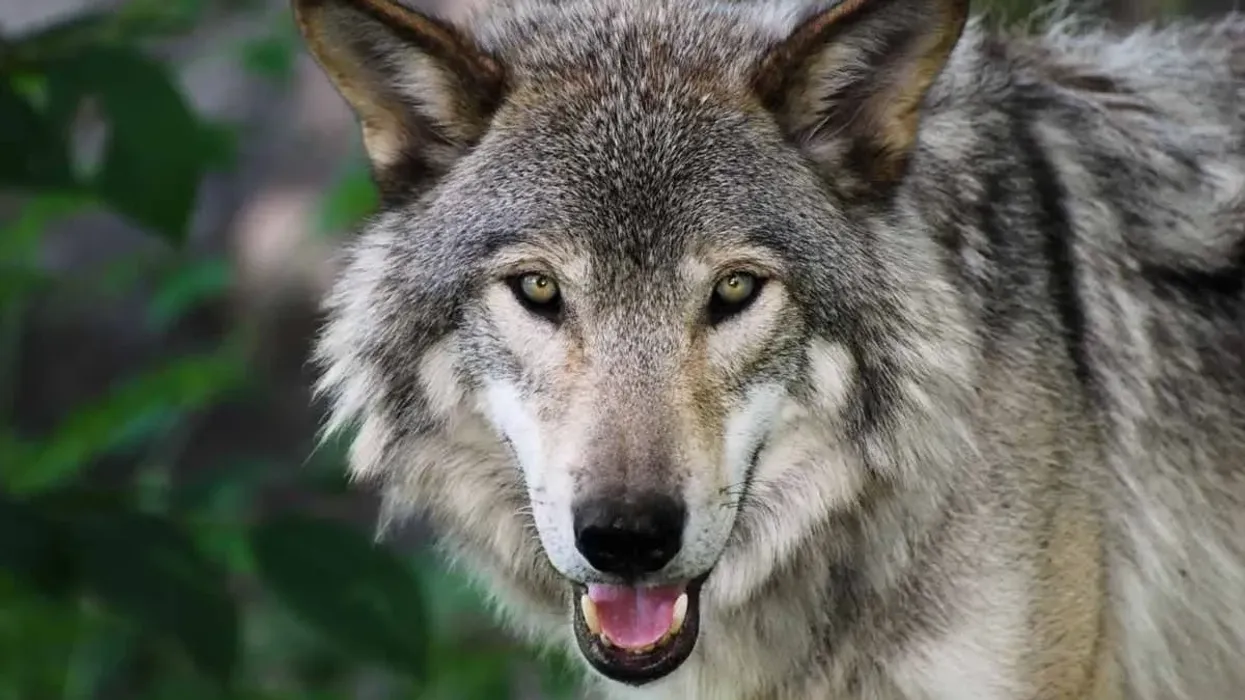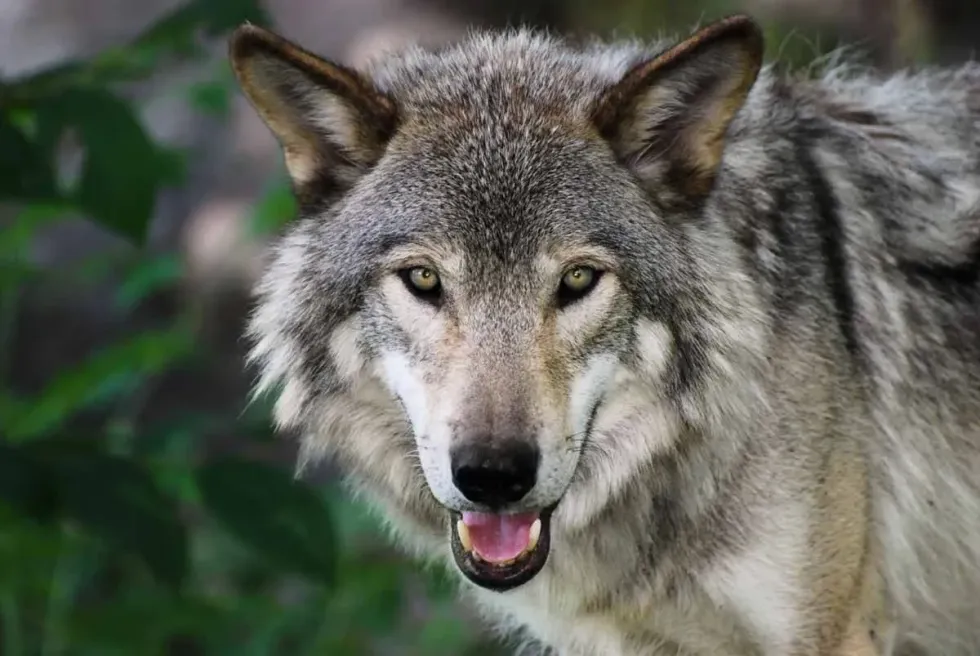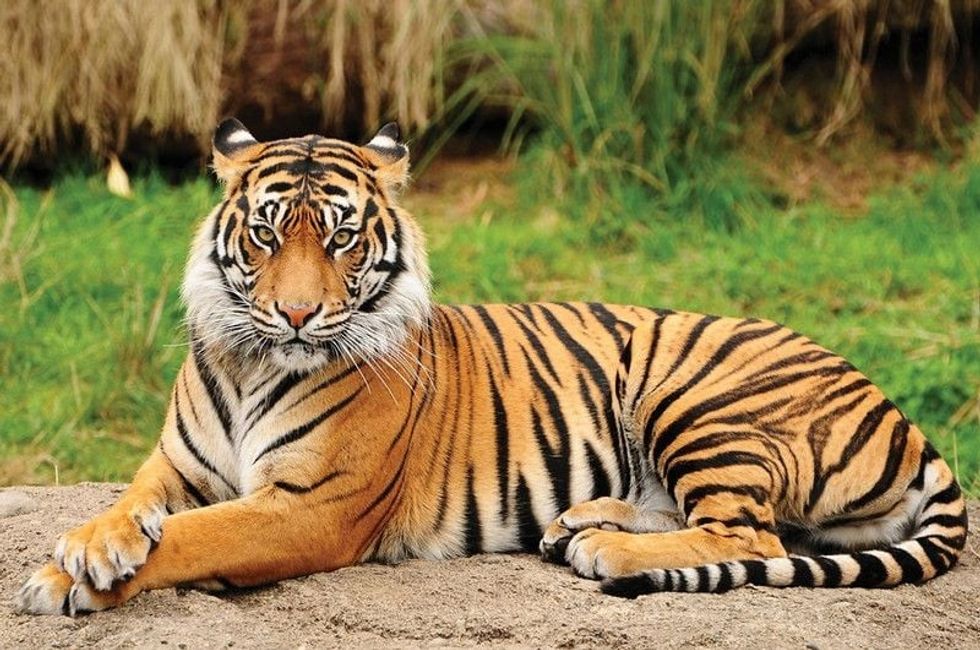Gray wolves are the largest of all canids, native to North America and Eurasia. They live in packs consisting of members up to two dozen, young ones and an alpha female and male as the lead breeding pair. Only a dominant alpha female can give birth to new pups; however, it depends on the rules of particular packs.
They hunt large hoofed mammals like moose, reindeer, and bison. Wolves may hunt in packs or solo, depending on their target. Wolves often engage in a fight with pack members of other packs over new territory or livestock.
Wolves are dangerous to keep as a pet, and It is difficult to train them properly. Wolves are dangerous animals indeed, but they tend to avoid people.
Gray wolves are also an attractive exhibit for every zoo all over the world. If you want to see their elegance of them, visit Smithsonian’s National Zoo and the San Diego zoo.
To learn more, we have collected a set of interesting information about this fascinating creature for you to read. You can also learn more by reading up more articles on the tundra wolf and the Ethiopian wolf.
Gray Wolf Interesting Facts
What type of animal is a Gray Wolf?
A gray wolf is a group of more than thirty subspecies of apex predator wolves.
What class of animal does the Gray Wolf belong to?
All subspecies of gray wolf belong to the Canidae family of the Mammalia class of Animalia kingdom.
How many Gray Wolves are there in the world?
The current strength of the gray wolves' family is approximately 300,000 strong. According to biologists, around 10,000 wolves live in Alaska, and the wolf population in Canada is 60,000 strong.
Where does the Gray Wolf live?
Wolf populations are native to Northern Hemisphere. They are found in North America, Alaska, Northern Wisconsin, Northern Michigan, and Russia. Mexico is the home of timber wolves, another subspecies of gray wolves.
What is the Gray Wolf's habitat?
Wolves can be spotted up to 9800 ft (3,000 m) above sea level. Wolves' habitat depends on their species as well as the nearby human populations and the availability of livestock.
For example, Arctic wolves live in mountain ranges and Arctic Tundras. Wolf populations can live in forests, grasslands, shrubs, rocky peaks, and deserts as well. The pack always stays within its territory.
Who do Gray Wolves live with?
Wolves always live and hunt in packs. Wolf packs can consist of 6-24 members, including an alpha male and female as lead breeding pairs.
All of us come across the term 'lone wolf' again and again in various references. Have you ever wondered what or who is a lone wolf? Well, the lone wolf is a wolf who is abandoned by his pack or decides to live on his own due to various reasons.
How long does a Gray Wolf live?
The average lifespan of a gray wolf is 8-14 years. However, In captivity, with the proper nutrition, they can live up to 16 years as well.
How do they reproduce?
Wolves tend to give birth at the warmest time of the year as it is the ideal climate for wolf pups to be born. Therefore their mating season is in early spring. The average gestation period is three months, and wolf pups are born in litters of four. All the pack members protect the pups together.
Wolves gain their sexual maturity at the age of two; however, they wait until adulthood to mate. In most scenarios, only the dominant pair will mate, and sometimes they don't even allow their subordinates to mate; they can even go to the extent of physically harming them to prevent them from breeding.
Young wolves live with their parents for two to three years, until they gain sexual maturity. After that, they are allowed to leave their pack, to form their pack and new territory.
What is their conservation status?
Gray wolves are marked as a Least Concern species by the International Union For Conservation of Nature (IUCN) Red List. Due to loss of habitat and constant killings by humans, wolf populations are at the edge of extinction in northern Europe.
They are listed as Threatened species by the state of Michigan DNR. The U.S Fish and Wildlife Service also lists them as an Endangered species.
Gray Wolf Fun Facts
What do Gray Wolves look like?

There are no animals larger than a gray wolf in the Canidae family. Wolves have long black-tipped bushy tails. Their fur can be of white, gray, black, and brown color with blackish gray and brown undersides.
They share familiarity in terms of looks with a German shepherd. Wolves' size depends on their diet and habitat. Typically wolves of the northern region are larger than in the south.
How cute are they?
You may call a pup cute; however, the word cute will fail to express the beauty of gray wolves. Gray wolves are majestic and elegant creatures. You can gaze into their eyes forever. We wouldn't recommend it though!
How do they communicate?
Gray wolves communicate with each other by making various sounds like barking, growling, and howling. They use the scent-marking method to mark their territories, and wolves are known as highly territorial species. Their body postures and tail movement are also means of communication. Wolf packs often engage in a brawl with each other over territorial agendas.
How big is a Gray Wolf?
Gray Wolves are the largest of all canids. A gray wolf's size depends on its diet, species, and territory. They can be 41–63 in (105–160 cm) in length, and they stand tall at 31–33 in (80–85 cm).
The length of their tail is 11-20 in (30-50 cm). The Canadian timber wolf is known to be the largest of their group. Gray wolves are typically twice as large as German shepherd dogs.
How fast can a Gray Wolf move?
Gray wolves can run fast at 31-37 mph (50 - 60 kph) speed. Eurasian gray wolves are hailed as the fastest of their group, with an incredible speed of up to 43 mph (70 kph).
How much does a Gray Wolf weigh?
Male gray wolves can weigh from 70-145 lb (31-65 kg) depending on their diet and habitat, and females can weigh from 60-100 lb (27-45 kg). The average weight of a pup is 1 lb (0.45 kg) after its born. The Canadian wolf is the heaviest one in their group.
What are the male and female names of the species?
Male wolves are called dogs, and there is no particular name given to females; however, in popular cultures, they are referred to as she-wolves.
What would you call a baby Gray Wolf?
Baby Gray Wolves are called pups.
What do they eat?
Gray wolves are carnivore animals with large hoofed mammals like bison, moose, reindeer, and musk oxen being their primary prey. Wolves also prey on fish, beavers, and rodents.
Wolves hunt in packs and can take down various large animal packs with ease. Sometimes when prey is scarce in their range, they can also steal food stocks from other packs or predators of different species. Wolves share their meal equally and can consume up to 18.7 lb (8.5 kg) of meat at once.
Are they dangerous?
Like most other canids, wolves also tend to avoid humans. The record of wolf attacks on humans is rare, even in history books! However, they still have the power to kill you.
Would they make a good pet?
Wolves are kept as exotic animals, and with proper training, they can be good working animals too! However, do not expect them to be as reliable as dogs as they are a dominant predator.
Did you know...
Gray wolves are also called timberwolves.
Gray wolves have been known for their terrifying but majestic howls.
Pack members can challenge an existing alpha male for the position.
Wolves may involve themselves in surplus killings when food is scarce, especially in winters.
What is special about a gray wolf?
They play a key role in balancing the ecosystem of their habitat. They control the elk and deer population, being their main predator. This act of balance is beneficial for all the fauna of the range.
What eats a gray wolf?
It can be said that cougars and coyotes are the primary predators of wolves. Also, wolves from the different packs can steal and devour pups.
Here at Kidadl, we have carefully created lots of interesting family-friendly animal facts for everyone to discover! Learn more about some other mammals, including the stoat and the coati.
You can even occupy yourself at home by drawing one of our Howling Gray Wolf coloring pages.










